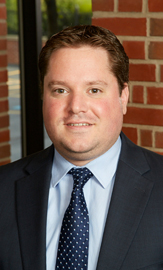Problems at Closing
The closing is scheduled. Finally, there is a light at the end of the tunnel. If you are selling your home then this means that you are likely in the process of packing up all of your junk belongings that have accumulated over the years. If you are buying a home then you have survived jumping through all of the hoops to ensure you have the funds present on the big day.
By the time the closing day arrives then any issues regarding the home or title of the home should have been addressed long ago so that the only thing left to do is sign your life away if you are the buyer or collect your proceeds if you are the selling party. Most closings do indeed function this way. However, very often an issue arises that needs to be addressed at the actual closing.
Generally, the problems that arise at the closing involve issues with the actual house (i.e. broken window, lawn not mowed, rug stain, etc.). These problems are things that arose after or were not addressed by the home inspection and are usually found at the time of the final walkthrough. On a side note, buyers should always schedule their final walkthrough as close to the actual closing as possible to avoid any surprises.
Any issues that are discovered after the home inspection should be disclosed to your attorney immediately. The last thing that any of the parties involved in the transaction want is to be surprised by issues at the closing. The more time in advance the issues are known and disclosed to all parties, the more time there is to come up with a solution that all the parties can agree to.
A common solution to deal with a problem at closing may be for the buyer to hold back a portion of the proceeds in escrow until the problem is resolved. For instance, if an electrical problem is disclosed by the seller at the final walk through, it may be reasonable for the buyer to hold back some money until it is determined exactly what the electrical problem is and get an estimate for how much it will cost to fix the problem.
Many, many issues can arise near closing, the most important thing that you can do, especially as a buyer, is alert your attorney as soon as the issue is known so that it can be addressed immediately. Once the buyer signs the papers, fixing the problem can become exponentially both time consuming and expensive
Christopher Stringham
Email: cstringham@mcvlaw.com
Phone: 315-471-1664
Christopher Stringham graduated from Western New England College School of Law in 2010 and was admitted to the New York State Bar as well as the United States District Court, Northern District of New York in 2011. He is a member of the New York State Bar Association, Onondaga County Bar Association, and the Injured Workers’ Bar Association of New York. He has been a member of Meggesto, Crossett & Valerino, LLP since October 2010.



